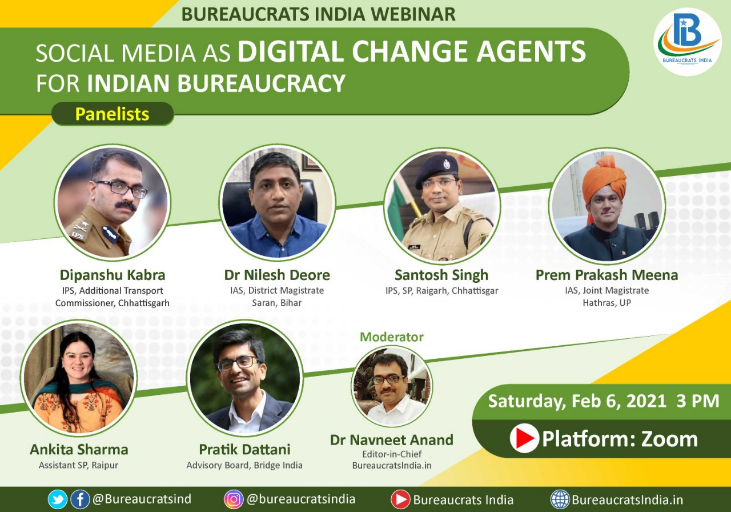Social Media and Bureaucracy
Figure 1: No Copyright Infringement Intended
Context:
- The biggest challenge today to Indian bureaucracy is the shift from desk to digital.
Shift includes:
- organisational and bureaucratic response to digital spaces, especially the use of social media.
- transition towards e-office and e-governance
Challenges with usage of social media:
Pros:
- It enhances the access of the civil servants for the people. Many civil servants have become accessible to the common people and public service delivery issues have been resolved through the use of social media.
- Social media has also created a positive outlook towards an institution long perceived as opaque and inaccessible.
- Social media has increased awareness among people about government policies and programmes.
- It provides an opportunity to bureaucrats to shape the public discourse and engage with the public while being politically neutral.
- when the tendency among the political executive is to receive the very remarks or advice from bureaucrats that they want to hear, social media ensures that blind obeying is minimised and bureaucrats serve the people.
- In Modern Times, both values and facts are getting reshaped due to fake news and systematic propaganda within public policy circles as well. In such a scenario, the bureaucracy, which is expected to be the epitome of public values and a storehouse of facts, shouldn’t be expected to govern in private.
- It has also created an effective system where we could get citizens’ feedback in a seamless manner. Social media has changed the dynamics of governance.
Cons:
- anonymity, the defining feature of Indian bureaucracy, gets compromised when a civil servant uses social media.
- as an organisational form, the bureaucracy is incompatible with social media. While bureaucracy is characterised by hierarchy, formal relationships and standard procedures, social media is identified by openness, transparency and flexibility.
- Social media is getting used by civil servants for self-promotion. Through their selective posts and promotion of these posts by their social media fans, civil servants create a narrative of their performance.
- It is not a formal set-up where accessibility and accountability are based on uniformity of treatment. Social media accountability is no alternative to institutional and citizen-centric accountability.
- It is, in fact, partly unethical to use social media during office hours and justify it when some people who have travelled long distances are waiting outside the office.
Way Forward:
- Bureaucrats should use social media to improve public policies.
- There is a need for institutionalisation of social media usage. It is getting institutionalised in many Westminster system-based countries. During the Brexit debate in the U.K., many civil servants shaped public debate through the use of social media even while remaining politically neutral.
Case study:
- Recently, IAS officer of Saran,Bihar visited to a Dutch cemetery in the city of Chapra in his district. He posted a message about his visit on Twitter, following which an organisation working on conservation approached him. A chain reaction followed, and now the state government is in the process of sanctioning funds for the cemetery’s restoration.
- During Covid, social media proved effective in mobilising essential items to help the needy. Raigarh district crowd-sourced 1.4 million masks for public use, using social media.




1.png)
